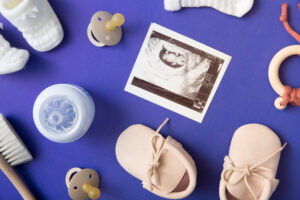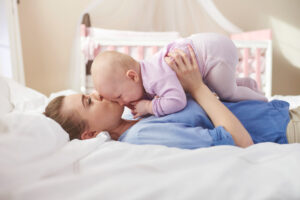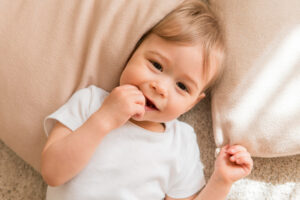Children are ready for potty training when they have physical and behavioral cues that their diaper is full or wet. This typically occurs by 18 months, but every child is different.
Make trips to the potty a regular part of your child’s day, such as upon waking and before and after meals and before naps and bedtime.
1. Know the Signs for Potty Training
A child is ready to start potty training when they can verbalize or signal that they need to pee or poop. They also need to be physically able to pull their pants up and down, walk and get onto the toilet independently. They should be able to recognize wetness or a soiled diaper, and they should want a new, dry one instead of sitting in a wet one.
They should also be able to tell you when they’re going potty, although some kids do not have the ability to do so until they are at least 3 or 4 years old. And they need to be able to sit on the potty for a short period of time, and it’s important that they don’t feel like they’re being forced.
If a child is resistant to the potty, they may have a medical issue that needs to be addressed. But more commonly, a resistance is due to a big change in a child’s life such as going on holiday, starting school, having a new baby or moving house, Jandu says. During times of stress, kids sometimes revert back to a stage of development when they felt safe and secure, and for many children this means wearing diapers.
To help prevent this, try to train your child during a time when there are no big changes coming up. Children need to be focused and comfortable when they’re learning a new skill, and it will go much more smoothly if they are not distracted by big changes.
2. Prepare the Environment for Potty Training
Even before your child is ready for potty training, you can start to prepare the environment. Bring your child to the toilet at regular times each day (such as after waking or after drinking lots of liquids). Introduce the word “potty” so they learn it, and use books on potty training to make them curious.
Most children develop control over their bladder and bowel by 18 months, so they are physically ready to start learning to use the toilet. However, they may not be emotionally ready for the change. This can be especially true if your family is going through any changes such as moving, having another baby or switching childcare providers. If this is the case, you may want to wait a little bit.
Make sure you have a potty chair in the bathroom, and that it is easily accessible. Have your child sit on it in a diaper to get comfortable with the seat and begin learning to use the toilet. Teach your child the toileting words (such as poop, wee or pee). If you have a commode that doesn’t have a seat, buy a smaller seat that fits securely inside the existing toilet and put it in the bathroom so your child can practice sitting.
Some families keep a special treasure chest filled with treats, toys and stuffed animals in the bathroom to help children stay motivated through the toilet training process. Creating a reward chart is also helpful.
3. Make Potty Training Fun
For kids who are ready, making potty training fun is a great way to encourage them. Using verbal praise goes a long way, and stickers on a potty chart can also be fun. You might even reward them with a small toy or treat after a few successful trips. Just make sure that you never punish your child for an accident, since this can set back potty training and they will lose confidence in themselves.
Consider scheduling potty time for the same time each day, like after breakfast, lunch and before naps. This will help to establish a routine. You might try placing a stool or chair beside the toilet to make it easier for boys to stand up and urinate. Make sure your child’s feet are on the stool, and they are fully clothed.
Learn to recognize your child’s behavioral cues that they are about to go – for example, grimacing or stopping activity (especially after meals). Talk about the feeling of needing to poop and encourage them to tell you if they have this sensation.
Play potty-related games, like potty-training charades or “potty-time bingo.” You can even hide small treats around the house and let them hunt for them while they are on the potty. Playing these kinds of simple games helps to reinforce that they can control their own body’s functions and makes them feel in charge.
4. Be Patient
As with most developmental tasks, potty training isn’t linear. Kids progress and then regress; sometimes they seem ready to move forward, but other times they seem like they want to go back to diapers. That’s why it is important to be patient and not get discouraged when setbacks happen. Think of the toilet-training process like learning to walk: There are going to be falls and spills before your child is a fully proficient big kid!
To help your child develop a sense of autonomy in the bathroom, encourage them to sit on the potty chair fully dressed. This can be a great time for them to read books, play with toys or do other activities. It is also a good idea to make trips to the potty chair a routine (also known as “practice runs”), such as after waking up in the morning and before and after meals or snacks. It is helpful to use the same words every time to talk about pee and poop (and other body functions), so your child doesn’t become confused.
Try to avoid scheduling any big changes during the potty training process, such as a family vacation or a new baby. This can add pressure and can make it harder for your child to adapt to the new toileting routine. And don’t forget to keep extra clothing and training pants handy at all times, including when your child is at school or in day care.





